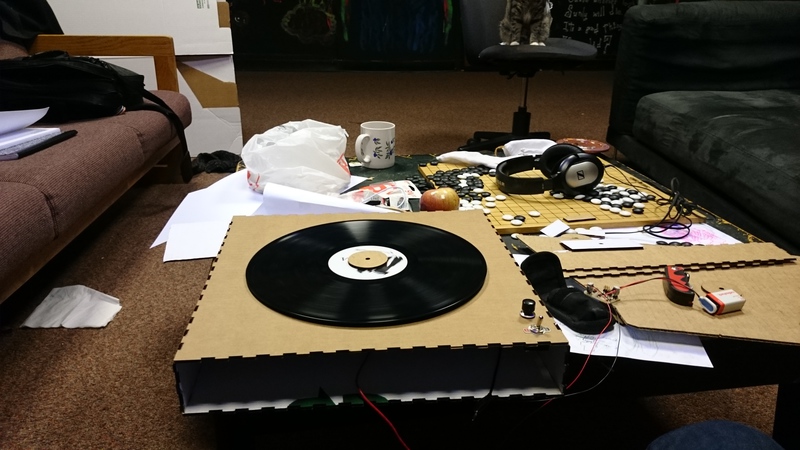

For my final project, I made a record player, or rather phonograph. There is a switch that when flipped, spins the at about 72 RPM. I made several different heads for the record player and all of them, when pressed to the record, they all make sounds that can be recoginized as the record. It's not hi-fi, but it's amazingly simple. You too could have invented the recording industry!
I found a bunch of carboard in the Stata loading docks:

I used the circuit from the motor week to drive the record. The shaft and range of speeds of the motor I used are just right. The first problem that had to be solved was how to create a large enough surface of contact with the record to transfer force from the motor to the record, while allowing records to be easily removed.
First, I just tried taping some cardboard to the motor:

However, this was a terrible idea. It would wobble everywhere when ever I ran the motor and rapidly fell off. I experimented with many designs and finally (with some help from my friend Nico Fine) settled on the following trick: Put a piece of cardboard with a hole in it onto the shaft. The shaft of the motor has a hole in it for attaching things. Put a correctly sized piece of metal (I used a nail with some tape around the correct region to adjust thickness) into the shaft; this will transfer force from the shaft onto the cardboard. On testing, didn't seem too bad:
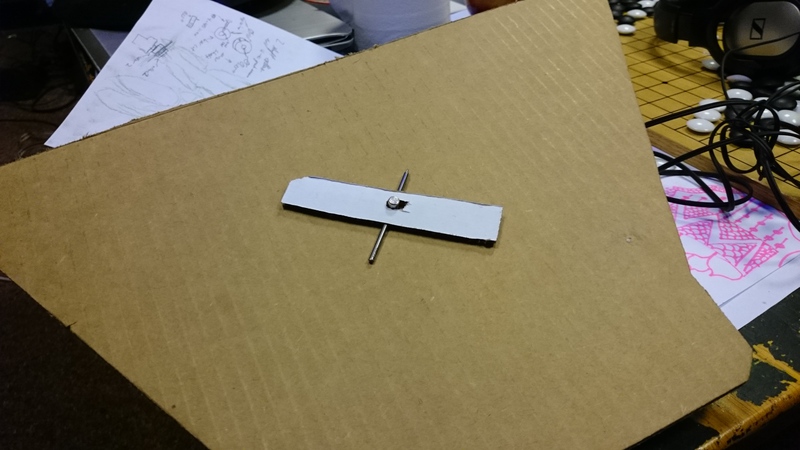
I hoped that it would be more stable once everything was assembled. I also made a nose cone, of the same kind that I experimented with before: just a piece of paper and a nail:
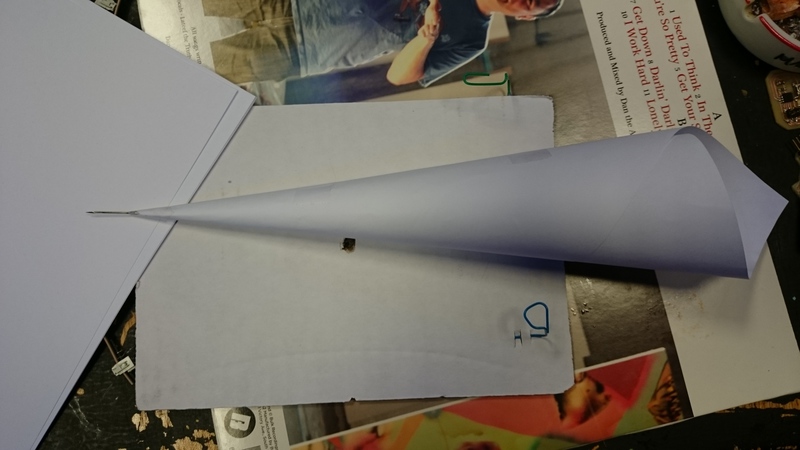
I then began to test pressfit slot designs with the kind of cardboard I had. It took several hours but eventually I got it right:

Initial rhino model for housing cutout Final rhino model, after much tweaking of slots
It took many more hours to actually cut the pieces for the housing. I realized that my slots in my testing were too long, so first I made them shorter and then longer again; the widths then did not appear to be sufficient, so I had to experiment with that; but eventually I had a pretty stable housing:

Note the holes for switches. These are standard Radioshack swiches; they are held to the cardboard by a nut.
One error I ran into was that I designed the box so that it could be only assembled in one way; there is a chirality to the sides so that the cardboard (rather than the white surface) has to be on the outside on all sides. However, I did realize that this means I have to flip the top piece when I cut it!
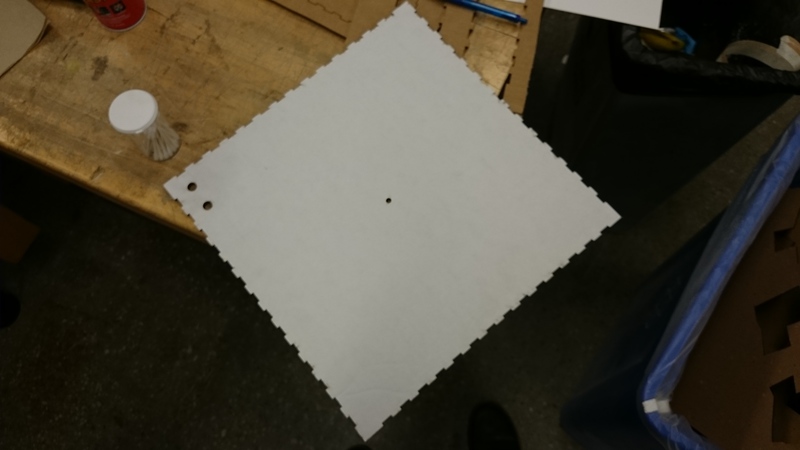
The above piece would not assemble at all. After flipping it, and cutting out some cardboard washers to hold the motor to the top surface of the cardboard and the record to the motor, I had an assembled housing!
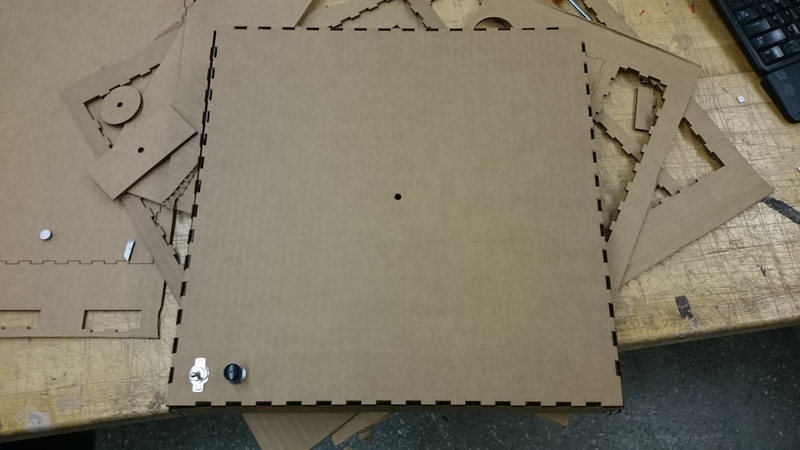
I then went to program and test it. After figuring out how to make sure the motor does not wiggle (by sliding cardboard under it to stabilize it), I modified the code from my motor week to make the motor only turn in one direction in bursts for testing, and I got the following behavior:
Hurray! At this point, it was a matter of getting the right
speed. I experimented with different pwm rates; I found that
I had to pwm this motor differently from the motor
in neil's example. This has a 30us on to 3 us off ratio, I believe.
In any case, the final result:

Quite a ways away from my first experiments:
(Note: in the final project and in the code, the record player is turned on and off with the switch; the video was taken right before I implemented that.)
The motor appears to draw too much current, as the batteries run out quickly. This may not be surprising, since it's a huge motor. I probably should have used a smaller motor and made a nice shaft for it. I also did not have the time to come up with a good way to mount the nose cone so that it moves smoothly as the record plays. But in any case, now I can hear the Beach Boys with a needle and a piece of paper!
The code (makefile) was a slight modification of the code for the motor project, but with the PWM more properly tuned for the record speed and some code to turn the motor on or off depending on the state of the button.
I had the interesting experience of having my final project thrown out the morning of the final presentation. It was mistaken for a pizza box by the people that clean East Campus. Apparently, pizza boxes with strange switches sticking out are still pizza boxes! I dug it out of the trash; the record was covered in banana, but after some cleaning the electronics appeared to be OK, and the project still worked fine, luckily!